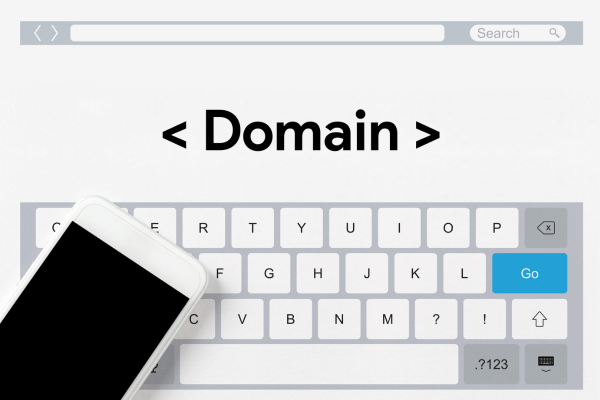Website ownership is more than just having a site online. It involves legal rights and responsibilities. The owner of a website has control over its content, design, and functionality. They are also responsible for complying with laws and regulations.
What is Website Ownership?
Owning a website encompasses a range of legal rights and responsibilities. It’s more than just having a domain registered in your name. It involves a comprehensive understanding of managing and controlling a digital asset. As the owner, you hold authority over the content, web design, and functionality of your site. This role includes making decisions about what is published, the aesthetic of the site, and how it operates.
As a website owner, you are responsible for complying with legal standards, including privacy laws and copyright regulations. You have to make sure your site respects others’ intellectual property and follows user privacy and data protection laws.

Determining Website Ownership
Figuring out who owns a website can involve a few steps. One main way to do this is by doing a WHOIS lookup. This is like a search that tells you who registered the website’s name. It checks the WHOIS database and shows who first signed up for the website with the company that keeps track of domain names. This search can give a good clue about who might own the website. But remember, this is just one part of figuring out who the owner is.
Another big part of deciding who owns a website is looking at who makes and takes care of the website’s content. Usually, the person or group that keeps the website updated and looks after it might be considered the owner. This is especially true if they made a lot of the stuff you see on the website.
Legal papers and contracts are important too. They can help decide who owns a website. This is important when someone makes a website for someone else. The contract should clearly say who owns the website. If lots of people work on a website, there needs to be a clear legal agreement. This agreement should explain who has what rights over the website.
Multiple Owners of a Website
A website can have multiple owners, a common scenario in collaborative projects or business partnerships. In these cases, each owner might have distinct rights and responsibilities concerning the website. This setup necessitates transparent and detailed agreements to avert potential conflicts.
In scenarios with multiple website owners, delineating each owner’s extent of control and responsibilities is imperative. This includes decision-making authority, profit sharing, and handling changes in ownership.
The presence of multiple owners can introduce a range of skills and viewpoints to a website project, but it also requires enhanced coordination and communication. A clear governance structure and a legal agreement detailing each owner’s rights and duties are fundamental. They are important for smooth operation and conflict avoidance.
Resolving Website Ownership Disputes
Disputes over website ownership can be intricate and might necessitate legal resolution. Such disputes typically involve questions about legal rights to a domain name, content ownership, or disagreements among owners.
Resolving these disputes often starts with examining existing contracts or agreements. They might provide clarity and potential solutions. If unresolved through these means, mediation or arbitration, where a neutral third party aids in reaching an agreement, may be pursued.
If these methods fail, legal action, such as filing a lawsuit, may be required. Given the complexity of legal disputes over website ownership, seeking legal advice is often advisable.
Transferring Website Ownership
Transferring the ownership of a website is a structured process. It involves several steps to ensure legality and binding agreements. The process usually begins with an agreement between the current and new owners. This agreement could occur through sale, inheritance, or business transactions.
The transfer includes both technical and legal steps. Technically, it involves transferring the domain name and the website’s data and files. Legally, it requires documentation like a transfer agreement, detailing the transfer terms, and a bill of sale for sold websites.
Both parties must clearly understand the transfer terms, including any warranties or liabilities. If the website involves third-party services or content, permissions, and licenses might need transferring or renegotiation.
Legal Considerations in Website Ownership Transfer
Transferring website ownership involves several legal aspects to ensure a compliant and smooth transition. These include intellectual property rights, contractual obligations, and liabilities linked to the website.
Establishing the seller’s legal right to transfer the website is the initial step. This encompasses ownership of the domain name, site content, and any related trademarks or copyrights. The buyer should verify these elements thoroughly.
Reviewing any existing contracts or agreements associated with the website, such as service agreements or content licenses, is also necessary. These might require transfer or renegotiation.
Documenting the transfer in a legal agreement is critical. This document should outline the transfer terms, including any warranties or liabilities assumed by the buyer. This serves as a legal record of the transfer and is vital for resolving future disputes.
Compliance with data protection laws is another key consideration. This is particularly true if the website collects user data. The transfer process should include strategies for handling this data legally and responsibly.
Determining the Rightful Owner of a Website
To find out who owns a website:
1. Check Domain Registration: This provides clues about who owns a domain.
2. Review Content and Agreements: Who made the website and any related contracts can indicate ownership.
3. Seek Legal Advice: Professionals can help understand complex legalities.
Transferring Website Ownership
Steps to Transfer Website Ownership
- Backup Your Website: Secure all data before transferring.
- Update Contact Information: Ensure the new owner can manage the site.
- Transfer Domain Ownership: Change the registrant details.
- Transfer Website Files: Use FTP or similar services.
- Update Credentials: Change login details for the new owner.
Legal Documentation for Website Ownership Transfer
Essential documents include:
- Bill of Sale: Outlines transfer terms.
- Assignment Agreement: Transfers rights and responsibilities.
- Domain Name Transfer Agreement: For transferring domain ownership.
- Non-Disclosure Agreement: Protects confidential information.
Conclusion
Understanding and managing website ownership is key to maintaining legal and operational control over your online presence. Whether you’re establishing ownership or transferring it, legal considerations and proper documentation are vital.
Take Charge of Your Website and Secure Your Online Presence Now
Ensure your website’s future by understanding and managing it effectively. Don’t wait—act today to protect your digital asset! Contact Easy Internet Services today.




